The answer to "can you do Pilates while pregnant" is that Pilates has a multitude of benefits for pregnancy, such as improving balance and breathing, reducing stress, improving blood circulation, and reducing fluid retention and muscle cramps.
In addition, Pilates strengthens the pelvic and abdominal muscles, helping to prevent common pregnancy complaints such as urinary incontinence, back pain, and pelvic pain. Strengthening these muscles can provide more support for the growing belly and also help prepare for labor and birth.
Pregnant individuals should only practice Pilates under the guidance of an instructor who has special training in Pilates for pregnancy. This is because some Pilates exercises can affect balance, leading to falls, or cause an increase in intra-abdominal pressure.
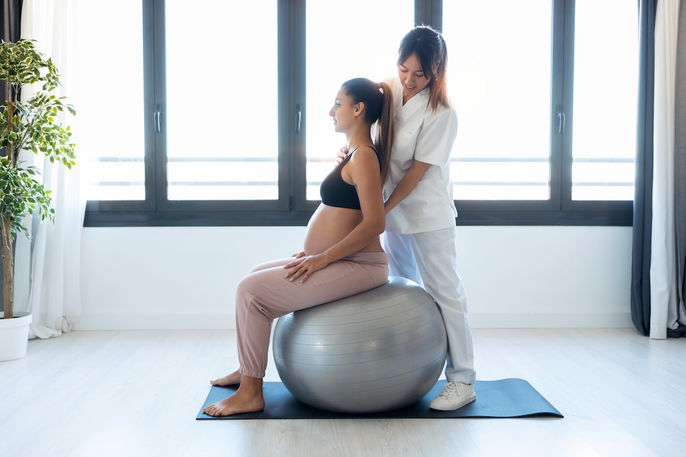
Benefits of Pilates for pregnancy
The main benefits of Pilates during pregnancy include:
- Preventing and relieving back pain;
- Reducing pelvic pain;
- Giving more support to the growing belly and decreasing the strain on the pelvic and lumbar regions;
- Reducing the risk of urinary incontinence during pregnancy and postpartum;
- Helping to control and improve breathing, increasing oxygen to the fetus;
- Improving balance and physical fitness;
- Improving blood circulation;
- Reducing fluid retention;
- Preventing varicose veins;
- Preventing leg cramps;
- Reducing stress and promoting relaxation;
- Controlling weight gain;
- Making for a smoother and easier labor and birth;
- Shortening postpartum recovery.
Strengthening and elongating the deep abdominal muscles as well as the gluteus medius, pelvic, and leg muscles, can also help prevent stiffness in the upper back that can make it difficult to breathe.
How can Pilates help labor and birth?
Pilates can help with labor and birth because it improves flexibility of the pelvic floor muscles, allowing the pelvis to open and making a vaginal birth smoother and easier.
In addition, Pilates poses can bring a great deal of comfort during labor, helping with breathing and even reducing labor pains.
Doing Pilates during pregnancy can also help accelerate recovery postpartum.
Also recommended: Postpartum Workout: 7 Exercises for Core & Pelvic Floor tuasaude.com/en/postpartum-workoutPilates exercises for pregnancy
Some Pilates exercises that can be done during pregnancy include:
1. Kegel exercises
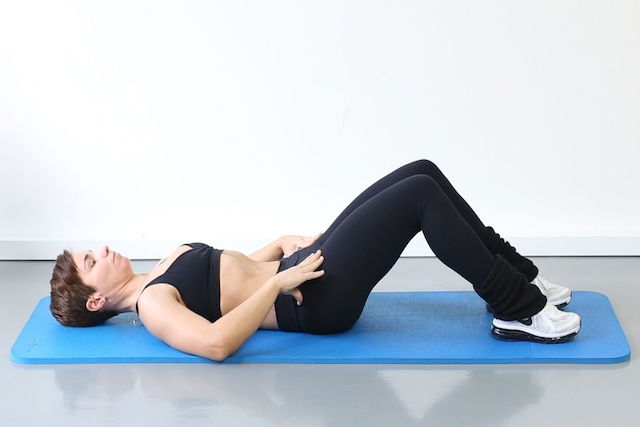
Lie flat on your back with your arms by your sides or placed lightly on your belly. Pull your legs up so that your feet are flat on the floor, or support your lower legs with a Pilates or yoga ball.
Maintain a neutral position, keeping your upper back on the mat and making sure not to arch your lower back (imagine there is only space for a pea between your lower back and the mat). Keep your shoulders down and away from your ears and your hips flat on the mat.
From this position, take a deep breath in, and when you exhale, contract the pelvic muscles, as if you were trying to squeeze a ball with your vagina.
Hold the contraction while you breathe in and out slowly. Perform this exercise 10 times in a row while maintaining good positioning and breath control.
2. Single leg lifts
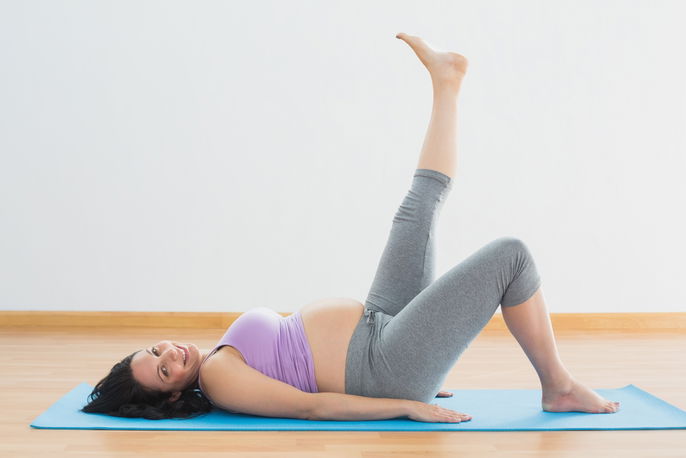
Lie flat on your back with one leg bent and the other straight out in front of you.
Perform five leg lifts with your outstretched leg, keeping the pelvic muscles contracted throughout the exercise. Make sure to keep the movements slow and controlled, and avoid lifting your hips off the ground. Repeat on the other side.
3. Bridge
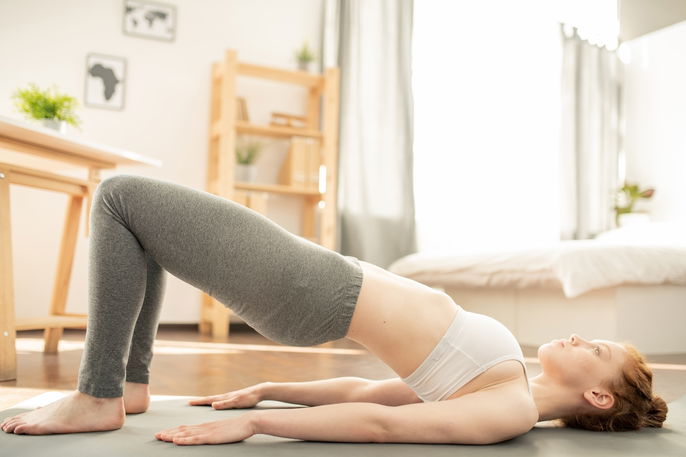
Lie flat on your back with your arms in line at your sides. Bend your knees and place your feet on the ground, with your heels directly under your knees.
Contract your pelvic muscles and lift your hips off the floor until your body forms a straight line from your knees to your head.
Perform this exercise five times while keeping your pelvic muscles contracted.
4. Cat pose
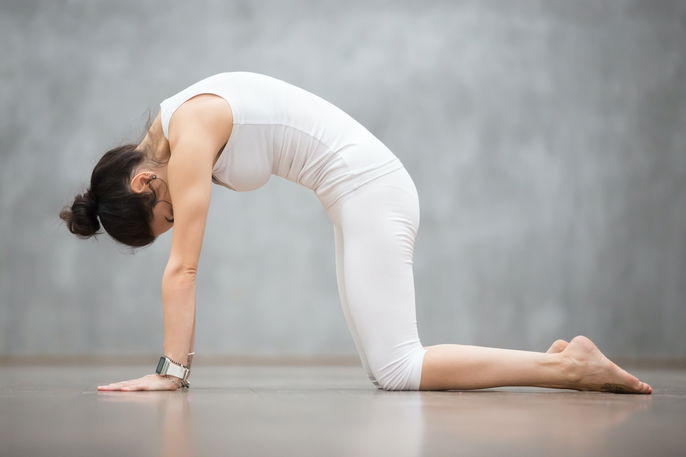
Position yourself on all fours. Move your chin toward your chest as you bring your hips toward the front and round your back.
Do this five times while keeping your pelvic muscles contracted.
5. Child's pose
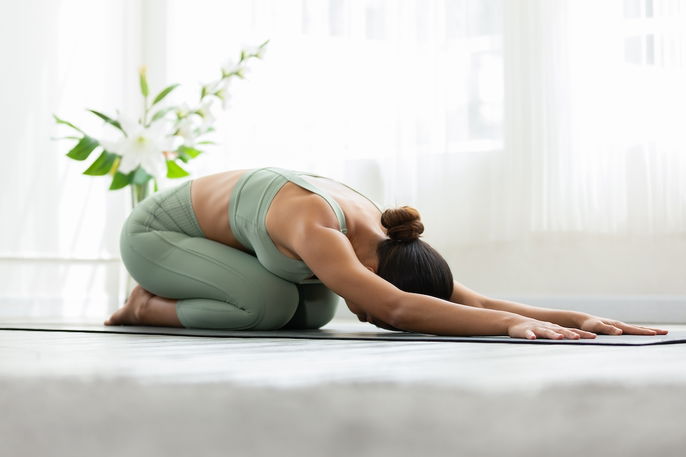
Remain on your knees and sit back on your heels, reaching your arms out in front of you on the mat and bending your body forward until you feel a stretch in your back muscles.
Maintain this position for at least 20 seconds.
6. Seated side bend
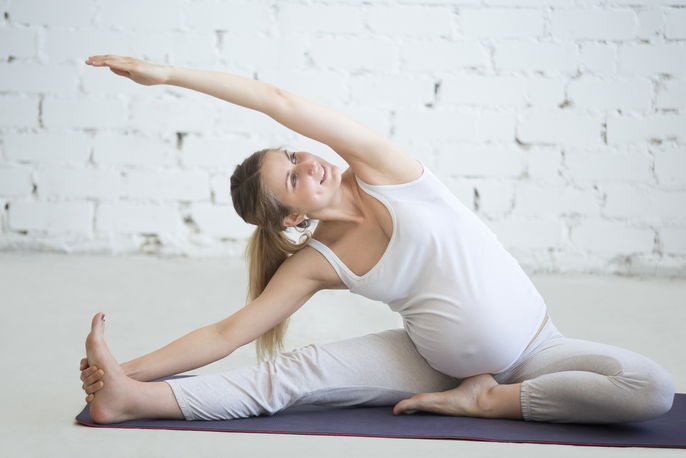
Sit on the floor with your back straight and your left leg stretched out and angled slightly to the side. Bend your right leg and place your right foot so that the sole of your foot is against the inside of your left thigh.
Raise your right arm and place your left hand on your left leg. Bend laterally in the direction of your left foot, letting your left hand slide down your left leg.
Hold this stretch for at least 20 seconds. Perform the same exercise again on the other side.
Special precautions
Especially during pregnancy, Pilates exercises should be performed with slow, controlled movements under maximum concentration.
Keeping the pelvic floor muscles contracted while performing these exercises is fundamental because it increases blood flow to the area and improves muscle tone, helping to prevent leaking of urine during pregnancy.
Make sure to tell your Pilates instructor about any discomfort you are experiencing during these exercises.
How many times a week can I do Pilates while pregnant?
Pregnancy Pilates can be done three times a week, as long as you are cleared by your OBGYN or midwife to perform these exercises, which should always be done under the guidance of a certified trainer or physical therapist.
Warning signs
Stop exercising and let your OBGYN or midwife know right away if you experience any of the following symptoms:
- Dizziness;
- Headache;
- Vaginal bleeding;
- Contractions that are strong or close together;
- Abdominal pain;
- Shortness of breath;
- Leakage of amniotic fluid.
Seek urgent medical attention if you experience chest pain, rapid heartbeat, or calf pain or swelling.
Contraindications in pregnancy
Pilates is contraindicated in pregnancy for those with an increased risk for miscarriage or who have conditions like preeclampsia, heart disease, or lung disease. Do not do Pilates if you are experiencing frequent uterine contractions or vaginal bleeding.
In these cases, any activity that could put the health of the mother or baby at risk should be avoided, not just Pilates.
It is important to talk to your OBGYN or midwife before starting Pilates during your pregnancy. This is to make sure you have been examined and are cleared for exercise. Your provider can help determine the safest form of exercise for you during pregnancy, taking into account any health concerns or individual risk factors.





























